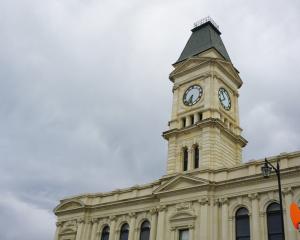What a year for weather it was. Rhys Chamberlain sums up the weather gods' deliveries for 2015.
Gales, thunderstorms, snow, extreme heat and freezing temperatures contributed to fires, flooding, motor vehicle accidents and power outages across Otago in 2015.
Statistics released by the National Institute of Weather and Atmospheric Research highlight the region's extremes, including devastating flooding in Dunedin; a fire, spread by gusty winds, that burned four homes on Saddle Hill; and unseasonal snowfall in Queenstown and Dunedin.
Niwa National Climate Centre principal scientist Chris Brandolino said Otago had its fair share of extreme weather last year.
"I think some of it's El Nino, quite frankly,'' Mr Brandolino said.
"I think that's the reality of it. El Nino was declared in June and the fact that [Otago] had the lowest temperature in June, that's no coincidence. [But] in any year, you do get extreme events.
"Could some of it be from climate change? Sure. Certainly man-made contributions are helping that.''
January 30 saw Queenstown hit with 55.4mm of rain, 87% of the normal total January rainfall. In the same month, Clyde recorded the highest temperature at 35.3degC.
Thunderstorms caused more problems the following month with an Air New Zealand flight struck by lightning on February 1 near Dunedin and hail damaging crops in Central Otago.
"Unseasonable'' low-level snowfalls caused disruptions in
April and May.
Flights were cancelled at Queenstown Airport and bus services were suspended in some hill suburbs in Dunedin on April 14.
On May 24 and 25, up to 30cm of snow fell in Arrowtown, with 25cm recorded in other parts of Central Otago.
Snow fell to sea level in Dunedin but did not settle.
The hill suburbs were hit with 10cm.
Dunedin's second-highest one-day rainfall ever recorded was on June 3.
It resulted in significant flooding that caused damage to 1250 properties and more than $30 million worth of damage, mostly in South Dunedin.
In the 24 hours to 9am on June 4, 113mm of rain fell and the fire service responded to 345 events.
A few days later, Cromwell and Lauder experienced unseasonably high temperatures, both reaching a record 21degC on June 9.
Dunedin managed 20.6degC on the same day and Ranfurly 18.6degC, also records.
The lowest temperature in 20 years was also recorded in June, -21degC at Tara Hills near Omarama.
It was so cold that the first national bonspiel in three years was held at Naseby.
Strong winds caused power outages to 2200 homes in Otago and Canterbury on October 4.
Those winds, combined with high temperatures and low humidity, caused a fire to rage out of control on Saddle Hill, Dunedin, on October 7.
Numerous other fires burned in the region on that day including at Dunback and Palmerston.
Strong winds caused power outages in the region again in November but there was a boost to spirits in Dunedin and Balclutha as each recorded its third-highest ever sunshine hours for the month.
The hottest day of the year brought record temperatures to the South on December 21 with the mercury reaching 34.5degC in Dunedin's Octagon, 33.1degC at Dunedin Airport and 31.9degC in Oamaru, all December records. A record for the most sunshine hours in Dunedin for the month was broken.
Mr Brandolino said said there was a chance Otago's extreme weather would continue throughout 2016 despite El Nino weakening as the year went on.
"Well, I think wash, rinse, repeat might be on the cards for a little while. [El Nino] is coming from such a high level that it's still going to be a major influence for the coming months.''
Average or above average temperatures were likely in Otago for much of this year and near-normal rainfall was also probable, he said.











